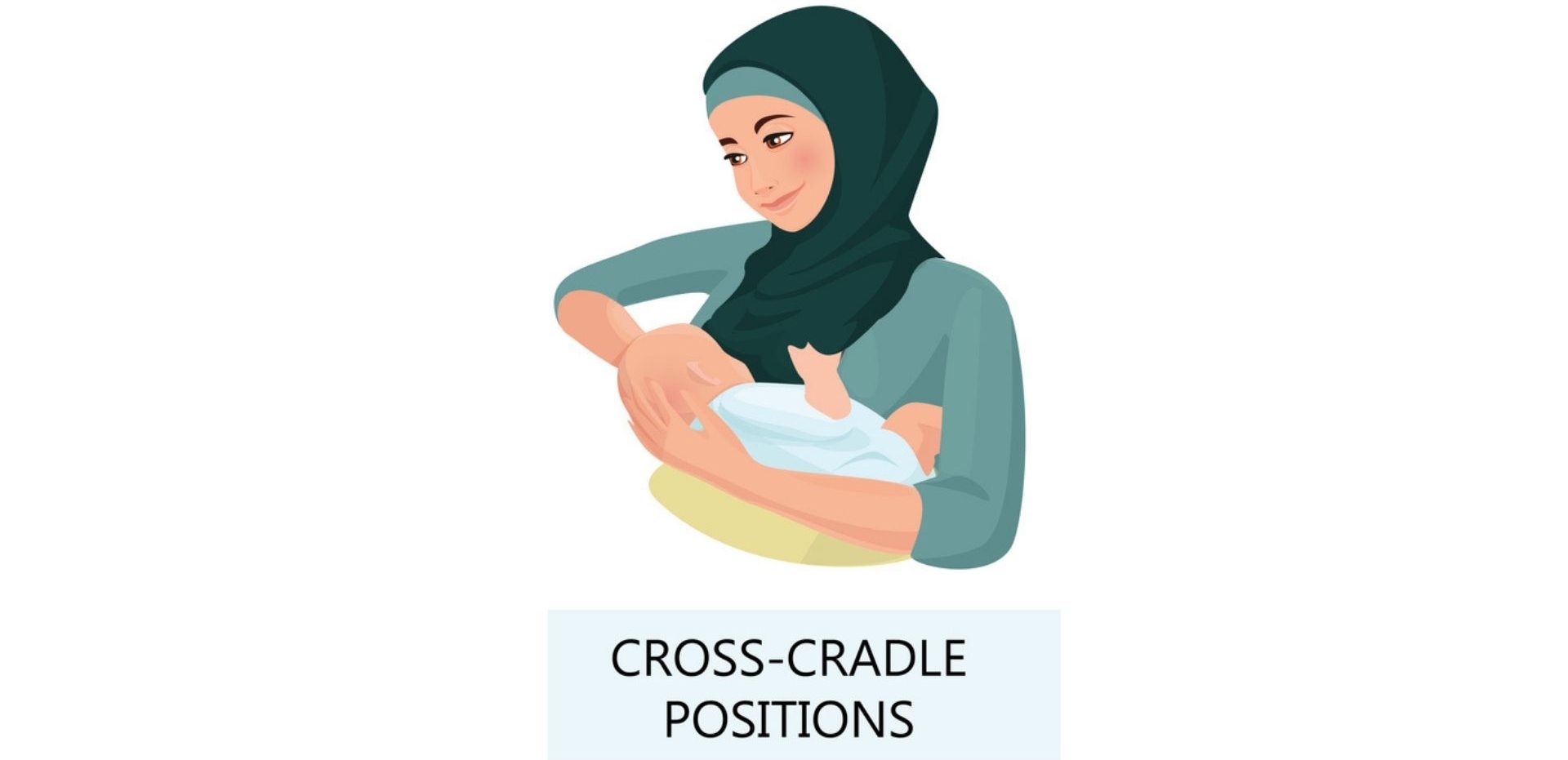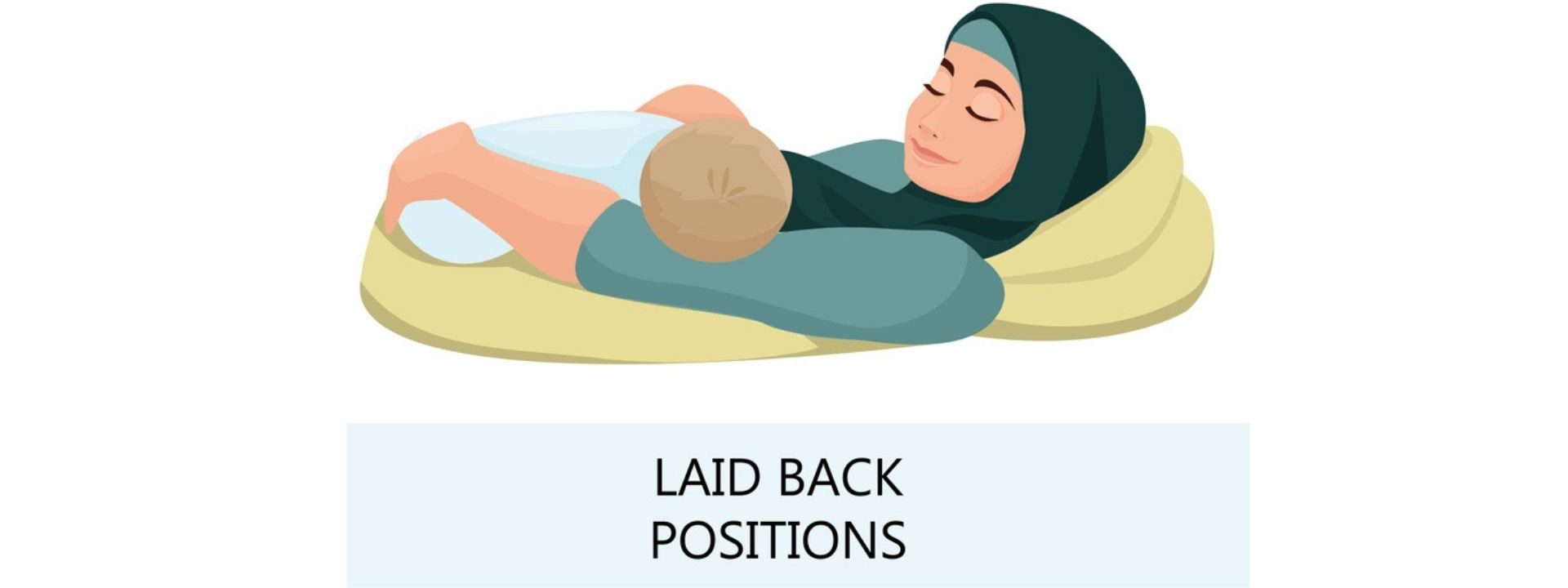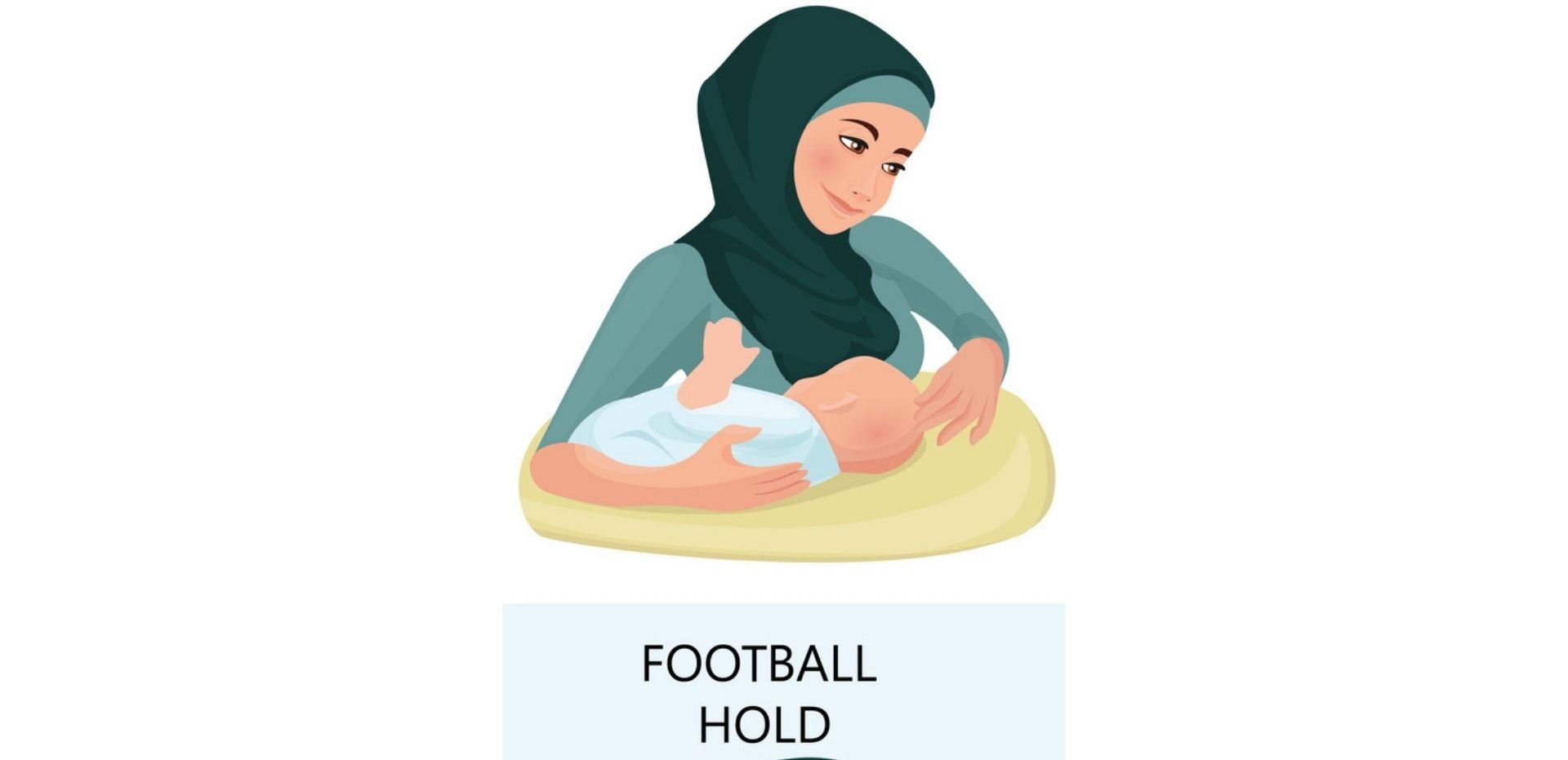Breastfeeding positions: 4 best positions for feeding your baby
It's important that you're comfortable while breastfeeding so make sure you find the right position for you!

Breastfeeding positions, and switching them up, could be a factor to help make your experience a little bit easier.
As new mums navigate matrescence it's so easy to feel that you're 'doing it wrong' especially when it comes to breastfeeding. For something that is supposed to be so natural, when it comes to getting to grips with how to breastfeed - it can be one of the hardest things to master. It’s tough and it can be physically gruelling.
Studies show that the right positioning for you and your baby can make your breastfeeding experience a joy. And Midwife, BA RM and DIPHE, Marley Hall, tells us; “If someone is struggling to get their baby to latch onto the breast in a certain position, sometimes changing positions can prove to be helpful.”
In addition, new mums can have breastfeeding pain and infections such as mastitis, sometimes using one of the best breast pumps can help to keep milk flow going. Positioning can play a large part in how well the baby is ‘latched on’ - this means the baby attaches to the breast to breastfeed. When latched on correctly the movements of the baby’s jaw and tongue squeeze the milk ducts below the areola to remove the breast milk from your breast and feed.
A comfortable position will help your baby be able to feed more quickly and easily. We spoke to the experts and here are the best feeding positions to try.
Breastfeeding positions
There are four main breastfeeding positions to learn - Cross Cradle hold, Laid-back nursing, Lying on your side and the Football hold.
“First, get everything you need before you sit down to feed," Midwife Marley Hall tells us. "I mean remote control, phone, charger, blanket to keep warm, snacks and all the drinks. If you have other children, ensure they are occupied too, an activity/snack box for them may help reduce feelings of jealousy.”
Parenting advice, hot topics, best buys and family finance tips delivered straight to your inbox.
Mum-of-two, Jasmine talks about her breastfeeding experience; "When it came to breastfeeding, I was lucky. My body and my boys just worked together. If it had been difficult I would have stopped. I managed to breastfeed both my sons, and the 'laid back' was my position of choice. ”
She goes on to tell us that Lansinoh cream (View at Amazon - £8) on nipples after every feed was such a game changer for her. And to also make sure that you take as much advice as you can get. “Get the midwife and Health Visitor to check every time you feed with them. I did this to really nail the latch/make sure it was right. Also be prepared for a lot of people to touch your boobs!”
Here are a few positions for you to try if you are experiencing difficulty getting your baby to latch on.
1. Cross Cradle hold

As breastfeeding positions go, this is an ideal position for early breast-feeding. Hold your baby in the crook of the arm opposite the breast you're feeding from — left arm for right breast, right arm for left. Support the back of the baby's head with your open hand.
Marley tells us; “Many women find this a good one. But, ultimately, every baby is different and some may have a preference over some positions rather than others. It’s a real case of trying a variety of positions to find what works best.”
2. Laid-back nursing

When feeding in bed or laid back on a reclining chair you can relax and tuck your baby close to your front. With your body leaning backwards, place your baby across your front,. Ensure that his/her ear, shoulder and hips are in a straight line with his/her mouth facing your nipple.
Once latched on, his/her body will be snuggled on to your body and you are unlikely to need any pillows to offer extra support.
3. Lying on your side

Lie comfortably on your side in bed, using pillows where necessary to support your head, neck and shoulders. You can also put some behind your back and in-between your bent knees. Lay your baby on the bed facing towards you, then bring him/her towards your breast until he is able to latch on comfortably.
Your baby shouldn’t have to strain to reach your nipple, so you may need to place a small pillow beneath him to raise him/her to the level of your breast.
4. The football hold

Place a pillow or some cushions at your side so that your baby can lie on them. Ensure that her/his head level with your breast and her/his feet pointing behind you. You should support her/his back and head with your right arm if she/he is feeding on your right breast and vice versa.
As with all feeding positions, ensure that her/his body is in a straight line and that she/he isn’t having to strain to reach your nipple. Marley tells us; “Many women who have larger breasts find this hold a little easier than the ‘cross cradle’ hold.
“This is because they don’t have to stretch their arms so much or feel like the baby’s face is being squashed into the breast. Laying down positions may also be beneficial to those who suffer from back pain or who are recovering from a caesarean."
How to breastfeeding a baby with reflux:
Marley also has advice for if you have a baby who is struggling with reflux. “More upright positions like the laid back (where mum is sitting and leaning back), may help when a baby has reflux. Any position where the baby’s upper body is higher than the lower body will be helpful.”
We spoke to the following breastfeeding experts:

A registered midwife from Surrey, UK who lives with her partner and 5 children including a set of twins. Marley has practised midwifery in various settings throughout London and Surrey over the past 13 years covering both the NHS and private sectors.
Areas of midwifery care Marley specialises in includes antenatal care as a community midwife, labour and birth care on both birthing suites & birth centres and postnatal care on both the ward and in the community.
Marley is also the author of Midwife Marley’s Guide – Pregnancy, Birth & The Fourth Trimester.
Related features:
- Best nursing pillows: 12 top-rated supports for breastfeeding mothers
- The breastfeeding diet: best things to eat
- Best breastfeeding accessories
- Breastfeeding and thrush: Symptoms, treatment and how to prevent it
Video of the Week:
Stephanie has been a journalist since 2008, she is a true dynamo in the world of women's lifestyle and family content. From child development and psychology to delicious recipes, interior inspiration, and fun-packed kids' activities, she covers it all with flair. Whether it's the emotional journey of matrescence, the mental juggling act of being the default parent, or breaking the cycle of parenting patterns, Stephanie knows it inside out backed by her studies in child psychology. Stephanie lives in Kent with her husband and son, Ted. Just keeping on top of school emails/fundraisers/non-uniform days/packed lunches is her second full-time job.